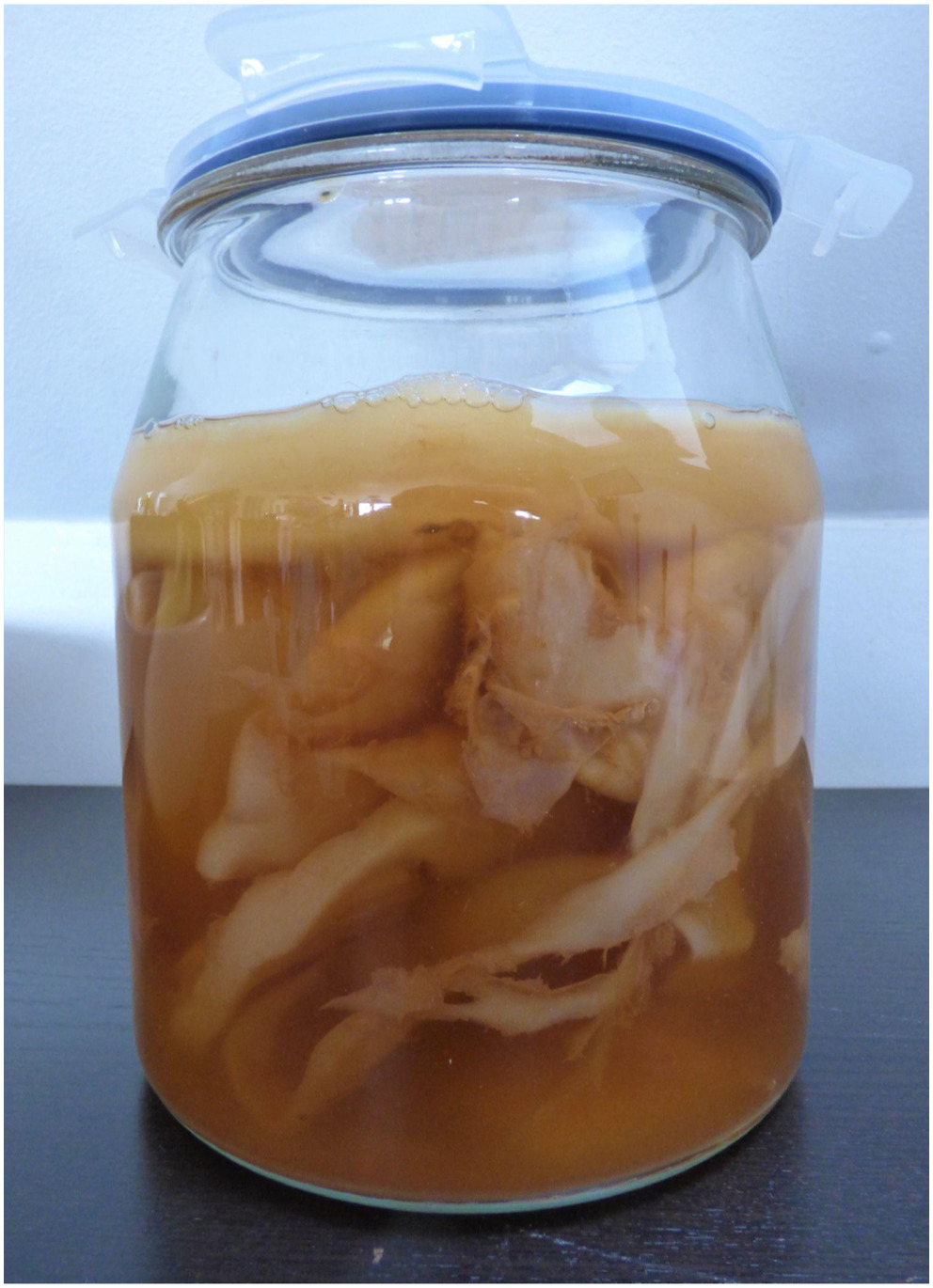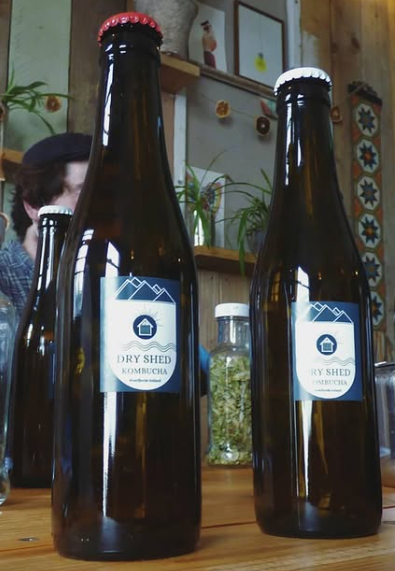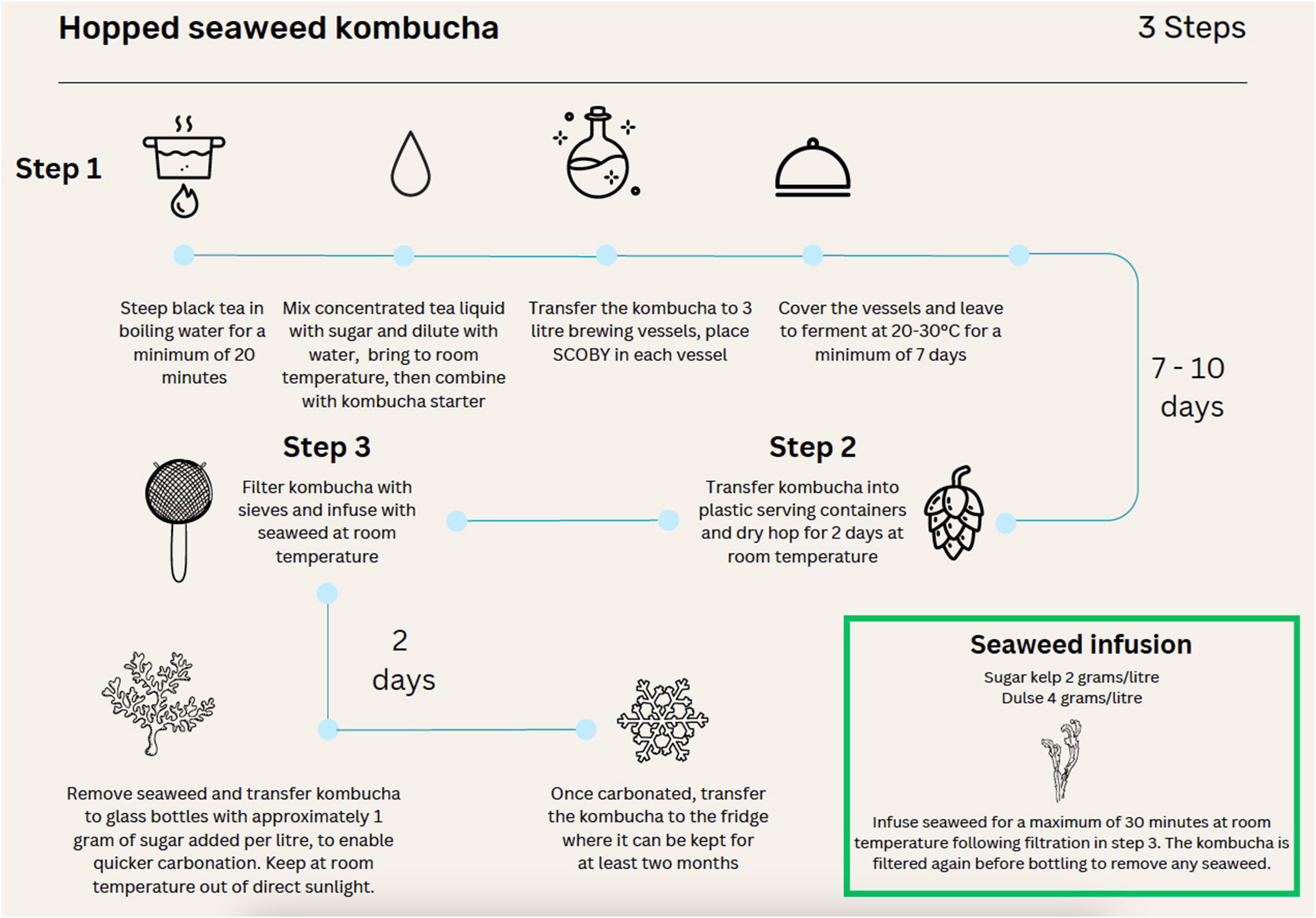- Research
- Fish tagging
- Lumpfish research
- Oceanography
- Seabed mapping
- Arnarfjörður
- Drekasvæði
- Ísafjarðardjúp
- Jökulbanki
- Jökuldjúp
- Kolbeinseyjarhryggur and adjacent area
- Kolluáll
- Langanesgrunn
- Látragrunn
- Nesdjúp
- Reykjaneshryggur and adjacent area
- Selvogsbanki
- South of Selvogsbanki
- South of Skeiðarárdjúp
- South of Skerjadjúp
- Southeast of Lónsdjúp
- Southwest of Jökuldjúp
- Suðausturmið
- Suðurdjúp
- Vesturdjúp
- East of Reykjaneshryggur
- Vestfjardarmid
- Seal research
- Whale Research
- Advice
- About
Would you like to taste seaweed kombucha?
09. May 2025
A new article reveals that kombucha production has developed into a profitable industry, and although the kombucha market in Iceland is still in its early stages, this study shows that seaweed kombucha is a feasible prospect for Icelandic consumers.  Although kombucha processes are well documented, there are specific considerations when including seaweed as either a flavour or a functional ingredient and this research also explored the combination of other flavours along with the seaweed infusions. More research is warranted on market feasibility regarding domestic and international markets and the impacts of seasonal seaweed growth patterns on taste and nutritional quality, but this study documented that a local seaweed kombucha product would be feasible both in terms of safety and commercial potential.
Although kombucha processes are well documented, there are specific considerations when including seaweed as either a flavour or a functional ingredient and this research also explored the combination of other flavours along with the seaweed infusions. More research is warranted on market feasibility regarding domestic and international markets and the impacts of seasonal seaweed growth patterns on taste and nutritional quality, but this study documented that a local seaweed kombucha product would be feasible both in terms of safety and commercial potential.  This research provides findings from the first published study on consumer perception of seaweed kombucha in the Icelandic context. Taste test results showed that awareness of kombucha is low, and there was no significant preference between seaweed kombucha and non-seaweed kombucha. The survey also gathered important information for future entrepreneurs and researchers on perceptions of fizzy drinks, health drinks, and seaweed products in general.
This research provides findings from the first published study on consumer perception of seaweed kombucha in the Icelandic context. Taste test results showed that awareness of kombucha is low, and there was no significant preference between seaweed kombucha and non-seaweed kombucha. The survey also gathered important information for future entrepreneurs and researchers on perceptions of fizzy drinks, health drinks, and seaweed products in general.
From the perspective of heavy metal and iodine content, the low levels found in the kombucha product are a positive indicator, meaning exposure and any related health risks would be low. However, this study highlights that further research is needed for direct consumption of seaweed for the species obtained in the Westfjords due to the levels of arsenic, cadmium and iodine, particularly in sugar kelp. Furthermore, food safety regulations need to be clarified and standardized before seaweed products can be fully integrated into the Icelandic market. Future market research should focus on a nation-wide understanding of Icelandic consumer preference for seaweed kombucha products, in addition to detailed sensory evaluation studies. This paper contributes to both the researchers and practitioners exploring the obstacles and opportunities in Iceland's growing blue economy.
The article can be read here.


